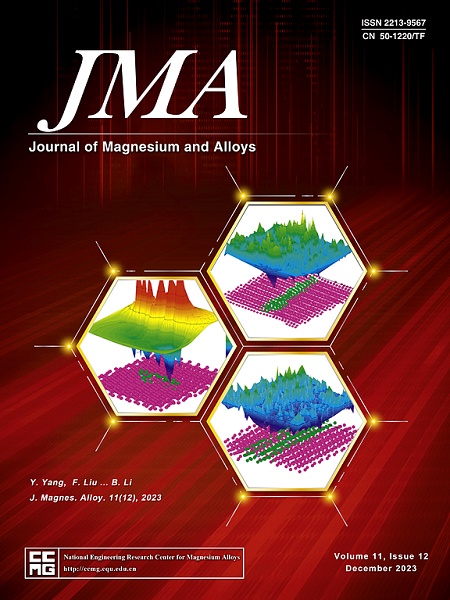Multi-scale simplified residual convolutional neural network model for predicting compositions of binary magnesium alloys
IF 15.8
1区 材料科学
Q1 METALLURGY & METALLURGICAL ENGINEERING
引用次数: 0
Abstract
This study proposes a multi-scale simplified residual convolutional neural network (MS-SRCNN) for the precise prediction of Mg-Nd binary alloy compositions from scanning electron microscope (SEM) images. A multi-scale data structure is established by spatially aligning and stacking SEM images at different magnifications. The MS-SRCNN significantly reduces computational runtime by over 90 % compared to traditional architectures like ResNet50, VGG16, and VGG19, without compromising prediction accuracy. The model demonstrates more excellent predictive performance, achieving a >5 % increase in R二元镁合金成分预测的多尺度简化残差卷积神经网络模型
本研究提出了一种多尺度简化残差卷积神经网络(MS-SRCNN),用于从扫描电镜(SEM)图像中精确预测Mg-Nd二元合金成分。通过对不同放大倍数的扫描电镜图像进行空间对齐和叠加,建立了多尺度数据结构。与ResNet50、VGG16和VGG19等传统架构相比,MS-SRCNN在不影响预测精度的情况下,显著减少了90%以上的计算运行时间。该模型显示出更出色的预测性能,与单尺度模型相比,R2提高了5%。此外,MS-SRCNN在其他镁基二元合金(包括Mg-La、Mg-Sn、Mg-Ce、Mg-Sm、Mg-Ag和Mg-Y)中表现出强大的成分预测能力,从而强调了其推广和外推的潜力。本研究建立了一种非破坏性的、微观结构的成分分析框架,与传统的实验方法相比,减少了表征时间,并提供了对不同材料系统中成分-微观结构关系的见解。
本文章由计算机程序翻译,如有差异,请以英文原文为准。
求助全文
约1分钟内获得全文
求助全文
来源期刊

Journal of Magnesium and Alloys
Engineering-Mechanics of Materials
CiteScore
20.20
自引率
14.80%
发文量
52
审稿时长
59 days
期刊介绍:
The Journal of Magnesium and Alloys serves as a global platform for both theoretical and experimental studies in magnesium science and engineering. It welcomes submissions investigating various scientific and engineering factors impacting the metallurgy, processing, microstructure, properties, and applications of magnesium and alloys. The journal covers all aspects of magnesium and alloy research, including raw materials, alloy casting, extrusion and deformation, corrosion and surface treatment, joining and machining, simulation and modeling, microstructure evolution and mechanical properties, new alloy development, magnesium-based composites, bio-materials and energy materials, applications, and recycling.
 求助内容:
求助内容: 应助结果提醒方式:
应助结果提醒方式:


